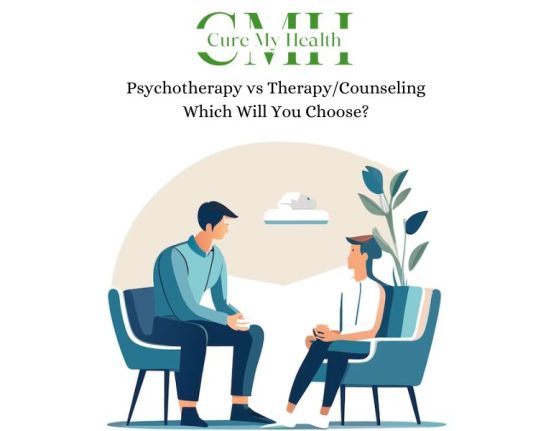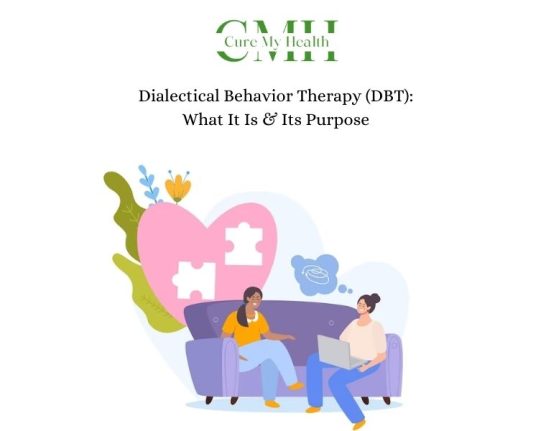We occasionally encounter difficult mental obstacles in life that leave us feeling uncertain, anxious, or stuck in negative thoughts.
When things are extremely difficult, it’s like attempting to navigate a convoluted mental maze. Cognitive-behavioral therapy (CBT) steps in as a source of assistance and support at that point.
But what is cognitive behavioral therapy’s most crucial component, and how might it support us when we feel overtaken by our thoughts and emotions?
To make it easier for you to understand how CBT can significantly improve your situation, we’ll explain its core concept in this post.
What is Cognitive-Behavioral Therapy
Let’s take a moment to understand what CBT is all about before we delve into its core idea. Talk therapy called cognitive-behavioral therapy concentrates on changing thought processes and behavior.
It’s a doable, goal-oriented strategy created to give people back control over their lives and overcome hardships.

The Keystone of CBT
At the very heart of cognitive-behavioral therapy lies a deceptively simple yet profoundly impactful principle: the way we think directly influences how we feel and act. This principle is akin to the engine that powers the CBT machine.
Thoughts: Our minds are ceaseless thought factories. Some thoughts are uplifting, filling us with positivity, while others are pessimistic, clouding our perception of the world and ourselves.
Feelings: These thoughts, whether sunny or stormy, hold sway over our emotions. Positive thoughts usher in happiness, confidence, and peace, while negative thoughts invite feelings of sadness, anxiety, and anger to the party.
Behaviors: Emotions, in turn, dictate our actions. When you’re anxious about a social gathering, you might opt to stay home. Conversely, when joy and confidence light your path, you’re more inclined to embrace social interactions.
Now, here’s where the real magic of CBT unfolds: by recognizing and comprehending the connection between thoughts, feelings, and behaviors, you gain the power to steer your life toward brighter shores.

The CBT Blueprint: Making It Work
So, how does CBT translate this principle into practical change?
Spotting Negative Thought Patterns: In cognitive-behavioral therapy, the first step is awareness – recognizing those dark clouds of negative thinking. These thoughts are like unwelcome visitors in your mind, often showing up when you face challenges. For instance, if you’re nervous about a job interview, you might hear the whisper of thoughts like, “I’ll definitely mess this up.”
Interrogating and Questioning Thoughts: Once you’ve pinned down those negative thoughts, it’s time to put them under the spotlight. Are they grounded in reality, or are they merely baseless assumptions? In the case of a job interview, you might probe these thoughts with questions like, “What concrete evidence supports the belief that I’ll inevitably fail?”
Replacing Negativity with Positivity: After looking at your negative thoughts, you begin to substitute them with more constructive and realistic ones. In our job interview example, you could replace the gloomy thought with, “I’ve prepared thoroughly for this interview, and I’m well-prepared.”
Behavioral Transformation: As your thoughts take a more optimistic turn, your emotions will follow suit. This newfound confidence can translate into positive changes in your actions. In our job interview scenario, you might approach the interview with a calm and self-assured demeanor.
Practice Makes Perfect: Cognitive-behavioral therapy isn’t a one-time solution; it’s a journey that requires continuous effort. By consistently challenging and changing your thought patterns, you build lasting improvements in your mental well-being and behavior.

Locating a CBT Therapist Near You
Now that you have a better grasp of CBT’s fundamental principle, you might be wondering, “How can I find a cognitive-behavioral therapy near me?”
Consult Your Healthcare Provider: Begin by reaching out to your primary care physician or a mental health specialist. They can provide recommendations and referrals to qualified CBT therapists.
Online Exploration: The internet is a treasure trove of information on finding CBT therapists nearby. Just type “cognitive-behavioral therapy near me” into your preferred search engine, and you’ll discover a list of local therapists.
Therapist Directories: Numerous therapist directories and online platforms specialize in linking individuals with therapists. Websites such as Psychology Today, BetterHelp, and TherapistLocator.net offer search functionalities to find CBT therapists near you.
Seek Recommendations: Don’t hesitate to seek advice from friends, family, or colleagues who may have experience with CBT therapy. Personal recommendations can lead you to trustworthy therapists.
Check with Your Insurance: If you have health insurance, contact your provider to inquire about CBT therapists within your network. This can help you identify

cost-effective therapy options.
Embracing the Transformative Potential of CBT
Cognitive-behavioral therapy is more than simply a theoretical framework; it’s also a step-by-step manual for improving your life. Here are some examples of how CBT can significantly alter your daily life:
Improved Problem-Solving Capabilities: As you continue to practice CBT, you’ll improve your problem-solving abilities. You’ll put your attention on identifying solutions rather than obsessing on the drawbacks. Beyond treatment sessions, this newly acquired talent can improve numerous facets of your life.
Better Coping Mechanisms: Cognitive-behavioral therapy gives you the resilience to weather life’s storms, which are full of ups and downs. You’ll learn more effective coping mechanisms that will make it easier for you to recover from setbacks.
Better Relationships: CBT can enhance your relationships in a favorable way. Understanding and controlling your own feelings and responses will help you communicate more clearly and resolve problems with style. This can then result in happier, healthier relationships with friends, family, and coworkers.
Long-Term Benefits: The changes fostered by cognitive-behavioral therapy are designed to be lasting. Unlike quick fixes or temporary solutions, CBT provides you with the skills and insights to sustain positive changes in your life, long after therapy concludes.
Holistic Well-Being: Ultimately, CBT aims to promote holistic well-being. It’s not just about alleviating symptoms but fostering a sense of balance and contentment in your life. CBT encourages you to focus on personal growth and self-improvement, promoting a more fulfilling and meaningful existence.

Conclusion
The core idea of cognitive behavioral therapy is the strong correlation between our ideas, feelings, and behaviors. You can change the plot of your life by recognizing and addressing unproductive mental patterns.
So, if you’re looking for a practical and successful strategy to overcome obstacles and improve your mental health. Think about finding a cognitive-behavioral therapy center nearby.














